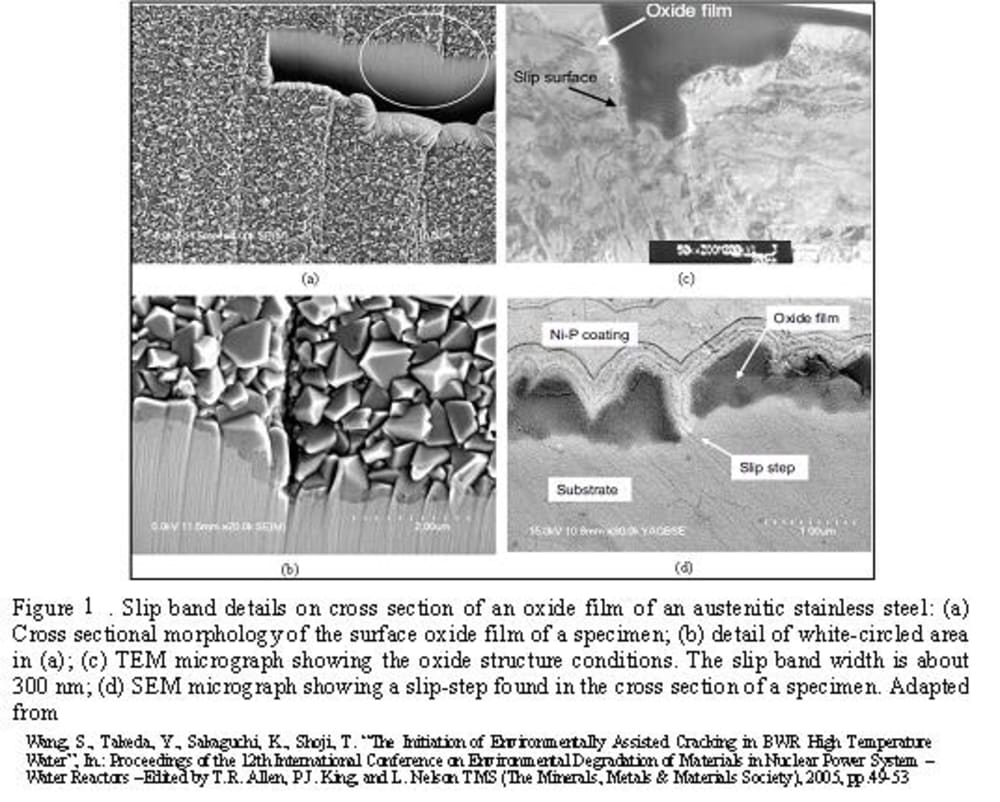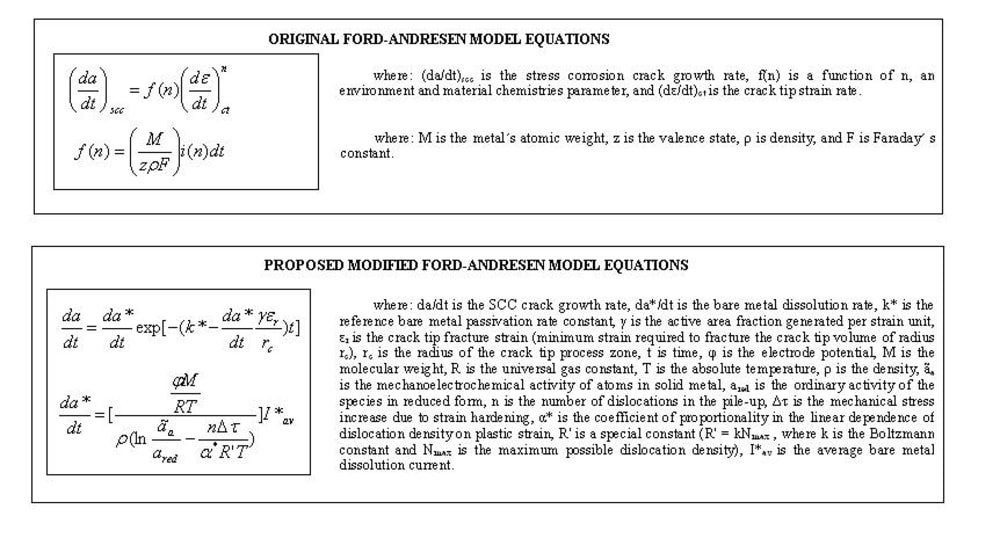Stress Corrosion Cracking (SCC) is a sudden and difficult-to-predict severe degradation mode of failure of nuclear, petrochemical, and other industries. This is a development proposal for a very important model´s improvement. This is the slip-step dissolution and film rupture model, developed by Ford and Andresen [1] at GE Research and Development Laboratories, and consolidated in a Code named PLEDGE. The main result of this Code is to predict failures within an adequate regression. But there are some critics about this model [2]. One intends to propose a specific theoretical improvement based in two of Gutman´s (one of the critics of the model) references [3], [4]. The main result is a theoretical improvement for the model which could be improve the PLEDGE Code, depending whether the resulted model´s validation.
One of the main models which represent the electrochemical and mechanical processes of stress corrosion cracking of nickel alloys and stainless steel in high temperature pressurized water and boiler water reactors is the slip-step dissolution and film rupture model (see oxide film details in Figure 1). It has been extensively built and studied for over 68 years, and some of its aspects are not completely clear. One departs from a bibliographical review of this model, to propose a theoretical alternative modeling [5], joining some critical issues of the review, concerning the mechanochemical effect of the slip-step process, and the formulation of the active path dissolution process: a modified dissolution rate equation which includes the mechanochemical contribution of the slip-step bands action (Figure 2).
The main potential future benefit is to offer an improved Code to solve the immediate necessity to prevent SCC for industries.
The investment cost and additional research could be realized by GE Research, and/or other university research program on SCC.
References:
[1]. P.L. Andresen, F.P. Ford, Life prediction by mechanistic modeling and system monitoring of environmental cracking of iron and nickel alloys in aqueous systems, Mat.Sci. Eng., A103, (1988)167-184.
[2]. M.M. Hall Jr., Critique of the Ford–Andresen film rupture model for aqueous stress corrosion cracking, Corros. Sci. 51 (2009), 1103-1106.
[3]. E.M.Gutman, An inconsistency in "film rupture model" of stress corrosion cracking Corros. Sci. 49 (2007) 2289-2302.
[4]. E.M.Gutman, W. Ke, “Mechanochemical Interactions”, presentation access in March 2009, http://www.ustb.edu.cn/skl/upfile/document/mechanochemical.ppt
[5]. O. F. Aly, M. Mattar Neto. Proposition of theoretical improvement on models of primary water stress corrosion cracking. In: 65th ABM International Congress, 2010, Rio de Janeiro. Proceedings... São Paulo: ABM, 2010, pp. 300-308.
Like this entry?
-
About the Entrant
- Name:Omar Fernandes Aly
- Type of entry:individual
- Software used for this entry:Microsoft Office, Word, Paint
- Patent status:none





